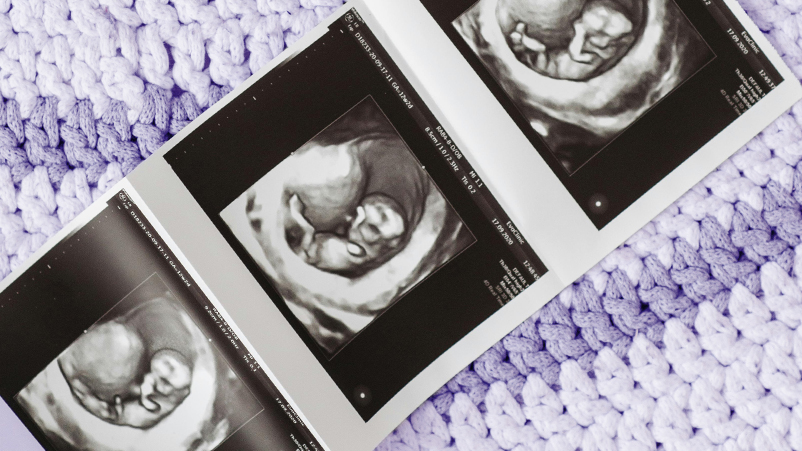People frequently ask whether it is acceptable to take birth control pills in order to regulate a woman’s menstrual cycle when they are irregular or to reduce the severity of extreme menstrual pain.
The answers to these questions have two components; a moral component and a medical component.
Morally, if a woman is not sexually active (thus eliminating the contraceptive aspect of the birth control pill), there would be no moral wrong committed. It is the contraceptive (and abortifacient) effect of these medications that are not permitted, not the drugs that are in them.
Even if a woman were married, birth control drugs could be used to treat a medical condition as long as the husband and wife were to abstain from marital relations, thereby eliminating the contraceptive (and abortifacient) effect. (Whether or not they should be used is another discussion.)
Some would argue that a couple could use NFP in these situations and simply avoid relations on the days of fertility, thus making their actions consistent with the drug they are using. However, it is important to remember that the birth control pill will, more frequently than not, eliminate any signs of fertility making the use of NFP impossible. Plus, the birth control pill ALWAYS has an abortifacient effect, putting any baby conceived at risk of death from the drug the woman is taking.
For Catholics, Our Holy Father, John Paul II stated more than 15 years ago that “Contraception is to be judged so profoundly illicit that it can never be justified for any reason.” This seems to close the door on any attempt to use birth control pills for “medical reasons” if there is ever any possibility of a contraceptive effect.
Medically speaking, one needs to examine the cause of the irregularity or of the pain associated with a woman’s menstrual cycle. There are two causes of menstrual pain, the first being common to all women and pain in general and the second cause limited to a few women affected by a certain disease state.
A woman’s menstruation is the end of the process of ovulation or development of an egg for that cycle. At the beginning of the cycle, after her bleeding is finished, usually several days of quiet time for a woman’s body occurs that is different for each woman. A “follicle” or fluid-filled sac begins to develop in one or the other ovary, gradually getting to the point of rupturing to release the egg. This process is associated with increasing estrogen.
After this fluid filled sac or cyst ruptures, the egg is released into the woman’s fallopian tube and the sac collapses to form another structure called a corpus luteal cyst. This cyst now begins to produce progesterone to change the lining of a woman’s uterus to make it ready for a baby to grow and develop there. Estrogen is also produced by this new cyst, the corpus luteum, though in lesser amounts than before the egg was released.
If the egg is not fertilized, after about 10-13 days on average, the hormone levels fall and a woman begins to menstruate. So, a woman’s cycle is simply the “play” of these two hormones: estrogen in the first part of the cycle, and lesser amounts later and finally progesterone at the second half of the cycle.
The bleeding a woman has is further influenced by the production of a family of chemicals that cause muscles throughout the body, as well as the uterus (which is simply a complex bundle of smooth muscles) to contract, called “prostaglandins.” These prostaglandins are responsible for a woman’s menstrual pain as well as nearly any muscle spasm or strain anywhere in the body.
So the pain at menstruation is influenced by the hormones estrogen and progesterone in any given cycle as well as the production of prostaglandins. A woman’s pain can be reduced by influencing either or both of these factors.
Most modern, low-dose birth control pills are simply a combination of artificial estrogens and artificial progesterones. They are very high POTENCY compared to the natural ones, however, primarily to make them active even after digestion in the stomach. This high degree of potency (as well as their being not exactly like what the body produces) is what gives them all of their side-effects and dangerous complications. Nearly ALL women will suffer some degree of these effects whether or not a woman actually experiences any symptoms.
The action of these hormones in the pill are threefold:
- They stop normal functioning of the pituitary gland in the brain, thereby interfering with the release of an egg
- They interfere with normal functioning of a woman’s cervix (the opening of the uterus or womb)
- Interfering with the normal lining of the uterus, making it very thin, keeping a baby from implanting.
It is easy to see then, that the birth control pill does not “regulate” anything in a woman’s cycle. These hormones only superimpose a “drugged” state of a woman’s body that has certain effects, chief among these being to stop a woman from getting pregnant (by any means, even stopping a baby already conceived from being received into his/her first home…his/her mother’s uterus).
This “drugged” or altered state of a woman’s reproductive cycle does have certain effects that appear desirable, in spite of the risks of major complications and side-effects, however, and for women with very painful periods since the birth control pill decreases the amount of uterine lining she develops in any given cycle, the smooth muscles of the uterus contract less at the time of menstruation, thereby reducing the pain from a “normal” cycle.
There are several alternatives to the use of the birth control pill:
Non-Steroidal Anti-Inflammatory Drugs (or NSAIDS) of which Ibuprofen is the most commonly known. Ibuprofen acts to actually stop the production of those pain-causing compounds we saw earlier: prostaglandins. A typical prescription dose is 600-800 mg. three times daily. Taken during menstruation this will be beneficial for most women. It is as simple as taking 3-4 Advil three times daily during menstruation.
Natural progesterone given cooperatively with a woman’s cycle may actually reduce the amount of pain and bleeding a woman has in any cycle by supporting her body with natural progesterone, just like her body produces in the second half of her monthly cycle. This hormone is available everywhere by prescription in the form of a product called Prometrium.
This natural hormone has NONE of the risks of birth control pills and actually makes most women feel better as opposed to most women getting ill with their first few cycles of birth control pills. For women charting their cycles with NFP (Natural Family Planning) this is given Peak + 3 through Peak + 12 at 200 mg. taken by mouth at night before retiring. This will help to oppose the effects of estrogen that may be building up the lining of a woman’s uterus excessively, thereby reducing the cramping at menstruation.
Natural progesterone is also a smooth muscle relaxant having direct effects on the smooth muscles of the uterus reducing their contractions and thereby decreasing the pain. Again, there are NO KNOWN risks or complications with the use of natural progesterone. The product Prometrium is in a Peanut oil base and so women allergic to peanuts cannot use Prometrium and may need a pharmacist to compound a progesterone capsule for them without peanut oil elements.
Supplemental calcium at about 1,000 mg. per day (use a chelated form- it is more absorbable) is also helpful to decrease smooth muscle contractions. This can be taken every day along with other supplemental vitamins a woman may take. It is safe through pregnancy as well.
Flax Seed Oil at about 1,000 mg. day may also be helpful. Flax Seed Oil is a good source of Essential Fatty Acids (EFA’s) which are probably deficient in modern diets. These EFA’s are necessary for the production of the body’s hormones in both men and women and they may be able to boost a woman’s hormone levels that are deficient and causing various cycle abnormalities including pain and abnormal bleeding.
Diet and exercise cannot be emphasized enough and should be at the top of the list but these are usually the last things a patient wants to hear from their doctor. I encourage women to read Marilyn Shannon’s excellent book: Fertility Cycles and Nutrition as a good primer in this area. I also encourage my patients to engage in regular exercise at least 30-40 minutes 4-5 times per week. The research is very clear that exercise reduces pain in chronic pain states, decreases anxiety, burns fat and promotes a general sense of well-being. Regular exercise should become as important a part of our routine as prayer.
This review has addressed the normal aspects associated with painful and/or irregular menstruation for most women. Pain can additionally be caused by certain diseased states like Endometriosis that require further evaluation and possible surgery. The above alternatives to birth control pill use are for all women to be able to use in correcting various cycle abnormalities but if these modalities have little to no effect on the problems after about 3-6 cycles, further medical evaluation needs to be considered.
Contributed by: Paul L. Hayes, M.D. an obstetrician and gynecologist with more than 24 years experience in his field.


